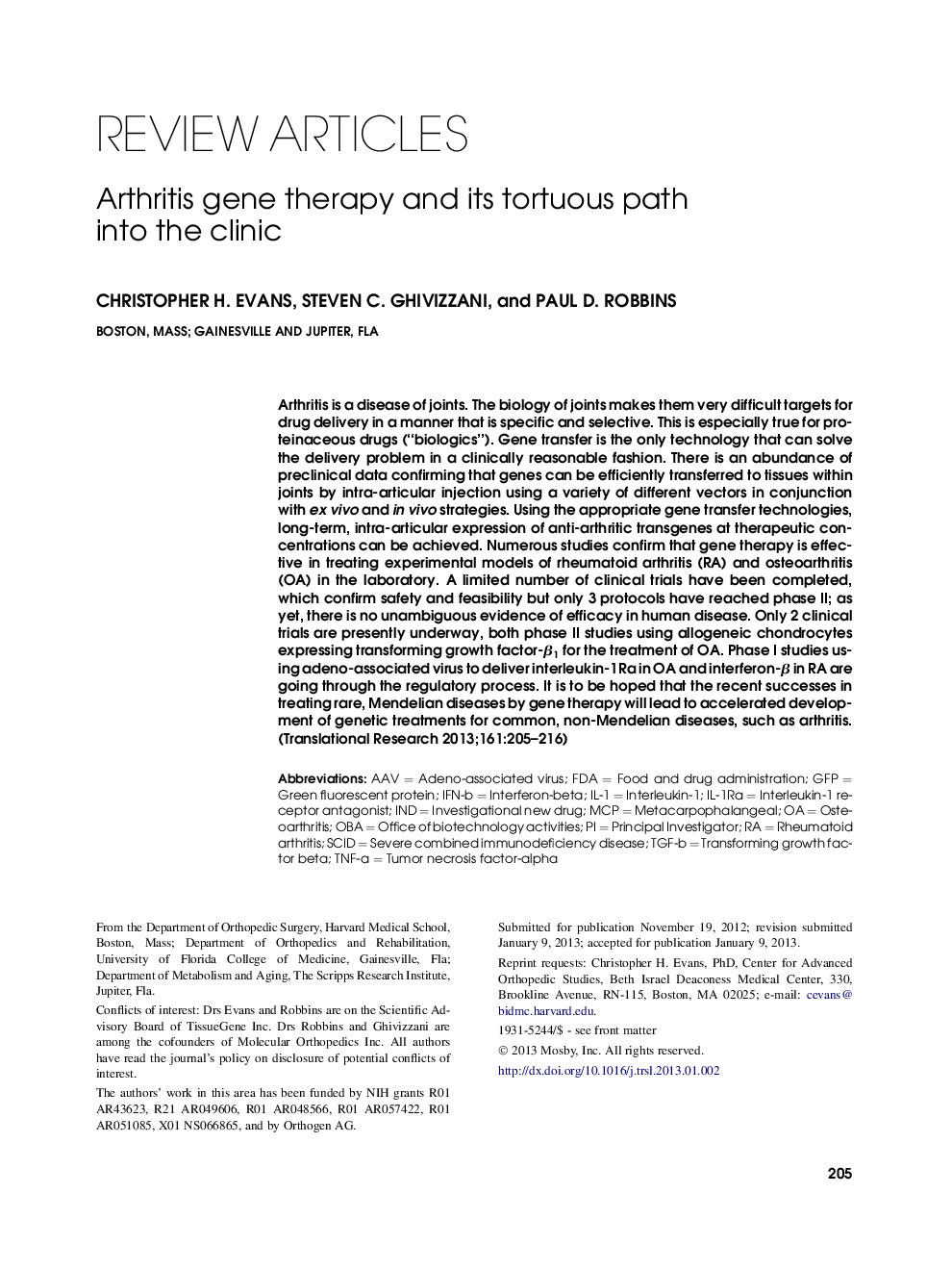| کد مقاله | کد نشریه | سال انتشار | مقاله انگلیسی | نسخه تمام متن |
|---|---|---|---|---|
| 3840227 | 1247899 | 2013 | 12 صفحه PDF | دانلود رایگان |

Arthritis is a disease of joints. The biology of joints makes them very difficult targets for drug delivery in a manner that is specific and selective. This is especially true for proteinaceous drugs (“biologics”). Gene transfer is the only technology that can solve the delivery problem in a clinically reasonable fashion. There is an abundance of preclinical data confirming that genes can be efficiently transferred to tissues within joints by intra-articular injection using a variety of different vectors in conjunction with ex vivo and in vivo strategies. Using the appropriate gene transfer technologies, long-term, intra-articular expression of anti-arthritic transgenes at therapeutic concentrations can be achieved. Numerous studies confirm that gene therapy is effective in treating experimental models of rheumatoid arthritis (RA) and osteoarthritis (OA) in the laboratory. A limited number of clinical trials have been completed, which confirm safety and feasibility but only 3 protocols have reached phase II; as yet, there is no unambiguous evidence of efficacy in human disease. Only 2 clinical trials are presently underway, both phase II studies using allogeneic chondrocytes expressing transforming growth factor-β1 for the treatment of OA. Phase I studies using adeno-associated virus to deliver interleukin-1Ra in OA and interferon-β in RA are going through the regulatory process. It is to be hoped that the recent successes in treating rare, Mendelian diseases by gene therapy will lead to accelerated development of genetic treatments for common, non-Mendelian diseases, such as arthritis.
Journal: Translational Research - Volume 161, Issue 4, April 2013, Pages 205–216